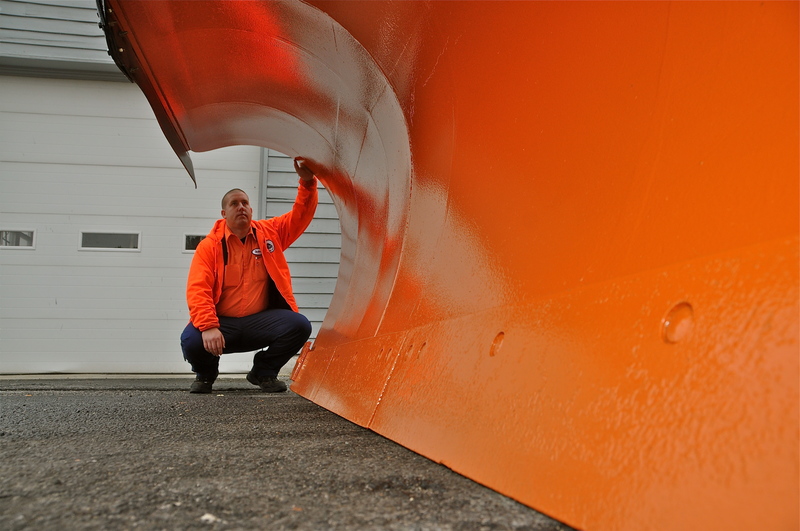State transportation officials are prepared for the worst, but are hoping for the best this winter season. They are surely hoping that the winter of 2012 will not be a repeat of the winter of 2010 when back-to-back blizzards nearly paralyzed the state and cost $17 million in the process.
As leaves fall with the temperature, Delaware Department of Transportation employees begin the annual process of getting equipment – mostly snowplows – ready for the winter season.
And it’s hard to predict what will take place this winter. The Weather Advance Storm Prediction Center says the Mid-Atlantic region will have an average winter with little chance of significant storms along the coast.
The Old Farmer’s Almanac says winter in the Mid-Atlantic will be drier than usual with near average temperatures but above average snowfall. The almanac predicts the first snowstorm for the area between Dec. 17 and 20.
Dexter Massey of Laurel is one of 18 equipment operators at DelDOT’s Gravel Hill facility near Georgetown. For the past three weeks, he – along with all other snowplow drivers across the state – has been in high gear to get his dump truck converted into a snowplow. Massey’s work would pass any spit-shine inspection, as the truck is painted and cleaned from top to bottom.
He’s ready for snow to fall. The spreader, which can spread salt and sand or combination of both and brine, has been put in the truck bed, and all hydraulics are lubricated and in working order.
Massey said snowplow drivers have assigned routes and are on call 24 hours a day, seven days a week during the winter season. “You basically work until you are tired, come in and get some sleep and get back out,” he said.
During a major snow, drivers are required to get at least four to six hours of sleep with some break time built in as well. “I can work on four hours sleep and get back to work as good as normal,” he said.
About 2,000 tons of salt is stored at the Gravel Hill facility. Forty employees work out of the Gravel Hill facility, including 18 equipment operators, six mechanics, eight bridge operators, six ferry boat captains and deckhands and three supervisors.
“We are ready for whatever Mother Nature throws at us,” said DelDOT Secretary Shailen Bhatt. He visited the Gravel Hill facility to talk to employees prior to the start of the winter season. He said it’s been a top priority of his to meet and talk with all maintenance yard employees this fall.
Bhatt said it’s never too early to get ready; the state just missed a rare snowstorm in late October that blanketed the New England area with as much as a foot of snow in some places.
Statewide, nearly 500 employees take part in snow removal operations and during severe storms, DelDOT hires private contractors to help with snow removal on bus routes, along highway shoulders and with clearing important highway intersections and crossover areas.
In addition, the state has 65,000 tons of salt in 20 locations throughout the state. Before snow and ice events, DelDOT uses tankers to pretreat highways with liquid salt brine to reduce bonding of the snow to the pavement before snow falls.
DelDOT has set priorities for plowing state roads. Primary and arterial roads and transit routes – including routes 113 and 1 – receive first and continuous attention. Secondary, collector and local roads are plowed only after the primary roads are open and passable, said Jim Westhoff, DelDOT community relations officer.
DelDOT works with registered homeowner associations to reimburse part of the costs of plowing snow from storms of 4 inches or more. Associations must register for the program ahead of time and are reimbursed about 75 percent of the cost of plowing.
“This will allow subdivisions to have their roads cleared during or right after a storm, while state resources are focused on major highways,” Westhoff said.
DelDOT has set up a series of 18 electronic snow-measuring stations throughout the state, which are monitored by University of Delaware’s Department of Climatology scientists. Accumulation amounts are posted hourly at snow.deldot.gov.



















































